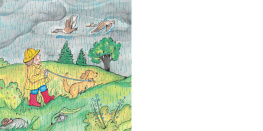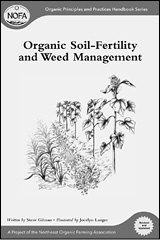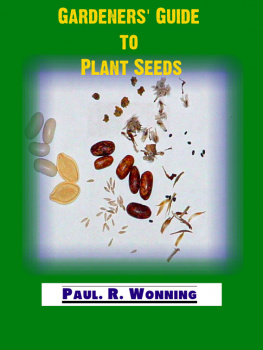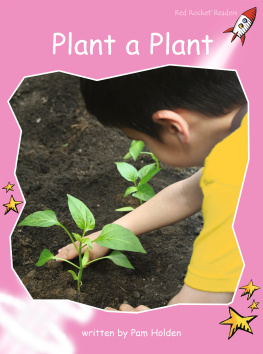HOLIDAY HOUSE is registered in the U.S. Patent and Trademark Office.
For Sue and Don Collins
Special thanks to Bob Welch
of Shearers Greenhouses,
Bradford, Vermont
Copyright 1991 by Gail Gibbons
All rights reserved
Printed in the United States of America
Library of Congress Cataloging-in-Publication Data
Gibbons, Gail.
From seed to plant / written and illustrated by Gail Gibbons.
1st ed.
p. cm.
Summary: Explores the intricate relationship between seeds and
the plants which they produce.
ISBN 0-8234-0872-8
1. SeedsJuvenile literature. 2. PlantsJuvenile literature.
3. PlantsDevelopmentJuvenile literature. [1. Seeds.
2. Germination. 3. Plants.] I. Title.
QK661.G53 1991
581.3dc20 90-47037 CIP AC
ISBN 0-8234-1025-0 (pbk.)
ISBN-13: 978-0-8234-0872-6 (hardcover)
ISBN-13: 978-0-8234-1025-5 (paperback)
ISBN-10: 0-8234-0872-8 (hardcover)
ISBN-10: 0-8234-1025-0 (paperback)
TOMATO
SEEDS
SQUASH
VIOLET
Most plants make seeds. A seed contains the beginning of a new plant.
TULIP
DAISY
ROSE
PEA
BUTTERCUP
CORN
Seeds are different shapes, sizes and colors.
All seeds grow into the same kind of plant that made them.
SUNFLOWER
OAK TREE
Many plants grow flowers. Flowers are where most seeds begin.
APPLE TREE
DANDELION
ZINNIA
ASTER
A flower is made up of many parts.
PETAL
In the center
of the flower
is the PISTIL.
At the bottom of
the pistil are
tiny egg cells
called OVULES.
The sticky part
at the top of
the pistil is
the STIGMA.
The parts of the
flower around the
pistil are the
STAMENS.
Stamens make
yellow powder
called POLLEN.
SEPAL
STEM
Before a seed can begin to grow, a grain of pollen from the stamen must land on the stigma at the top of the pistil of a flower like itself. This is called pollination.
POLLINATION
STIGMA
POLLEN
PISTIL
STAMEN
Pollination happens in different ways. Often, wind blows pollen from flower to flower.
Bees, other insects and hummingbirds help pollinate, too. While they visit flowers for their sweet juice, called nectar, pollen rubs onto their bodies.
POLLEN
POLLEN
Then they carry the pollen to another flower where it comes off onto its pistil.
POLLEN
PISTIL
POLLEN
If a pollen grain from a flower lands on the pistil of the same kind of flower, it grows a long tube through the pistil into an ovule. This is the beginning of a seed.
POLLEN
GRAIN
TUBE
OVULE
The seeds grow inside the flower, even as the flower begins
to die. As the seeds becomes bigger, a fruit or pod grows around them. The fruit or pod protects the seeds.
POD
FRUIT
When the fruit or pod ripens, it breaks open. The seeds are ready to become new plants.
Some seeds fall to the ground around the base of the plant where they will grow.
Some pods or fruits open and the seeds pop out. Some-times, when birds eat berries, they drop the seeds.
Other seeds fall into streams, ponds, rivers or the ocean. There, they travel on the water until they stick to dirt along a shore.
The wind scatters seeds. Some seeds have fluff on them that lets them float to the ground like tiny parachutes. Others have wings that spin as they fall.
Animals help scatter seeds, too. They hide acorns and nuts in the ground. Some seeds have hooks that stick to the fur of animals or peoples clothes. Later, they drop off onto the ground.
A flower bed or vegetable garden is beautiful! Seeds are planted to grow in the gardens.






























